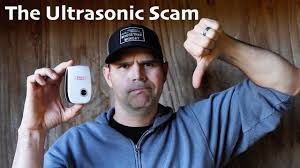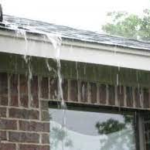Pests are a global menace to homes, they cause diseases, are unsightly and are a general health problem. Over the years, many chemicals and repellants have been invented to combat the issue of pests and the latest addition to this budding industry of pesticides and pest repellants is the ultrasonic pest repellant.
You may have heard about the ultrasonic pest repellant before, probably seen an ad or know someone that bought the product before, today we would be looking at the claims of the ultrasonic pest repellant and if they are as effective as they are claiming to be.
Let’s first understand what exactly it is for people who may not be aware of it
What is an ultrasonic pest repellant?
This is an electronic pest control device that emits a high-pitched sound at a frequency that is said to induce discomfort kill, drive away or incapacitate household pests, they are regarded as a safer, and more environmentally friendly way of dealing with pests as they have no residual chemicals in them that could be dangerous when the product is to be disposed of.
The ultrasonic pest repellants are designed to work electrically with a battery or be plugged directly into a circuit; the battery-powered ones are most effective for places that aren’t wired for power such as gardens.
The device is considered safe to humans as humans are unable to hear ultrasound and hence aren’t affected by it although some sensitive people may be able to pick up the sound.
Do ultrasonic pest repellants work on all pests?
The range of pests that the ultrasound pest replants are claimed to affect is massive but the most popular and well-known claims are for that of
- Cockroaches and beetles
- Mosquitoes
- Bed bugs and ticks
- Flies and Fleas
- Birds
- Rats and mice
The list actually continues but for practical purposes, the claims are generally well known for the above-mentioned animals and then it brings us to the question that you are all interested to hear, ‘do ultrasonic pest repellants work’?
The claim of ultrasonic pest repellants
The bold claim that the manufacturers of ultrasonic pest control repellants are that the ultrasound vibrations emitted by the machines disrupt the activities of a wide range of household pests who would immediately leave your residence to eek a place where the ultrasound can’t reach. I am sure you must have started finding the product enticing but it is time for you to see the statistics and research done on the product to show if it is effective before investing in getting one.
Do ultrasonic pest repellants work?

When it comes to the exact working of the product, no concrete research and evidence are proving that the claims of the manufacturers are genuine.
A study conducted showed that although the bed bug activity of a room did seem to change slightly when the devices were running there was no statistical difference when compared to not using an ultrasonic pest repellant.
Another study conducted by the University of Arizona showed that commercially available ultrasonic pest devices were not an effective means of treating pest problems but for some, the patency filing for the product keeps rising.
Even in situations where the product was found to be working a bit to the claims, it wasn’t consistent with studies showing that rodents stopped responding to the ultrasonic pest repellants after just a few days of exposure effectively becoming useless.
It has been shown in some studies that ultrasonic pest repellants have been doing exactly the opposite of their claims and aggravating the pest problem instead. A recent study explored the impact of ultrasonic pest repellants on mosquitoes and the devices actually increased the rate of mosquito bites by 50 per cent instead of reducing or curtailing the activities of the mosquitoes.
Now you may be asking why the devices aren’t working or not working effectively, well it’s true that the behaviour of some animals like cockroaches or rodents can be induced with certain ultrasonic sounds, but this is only in a lab condition with very specific applications, this technology has not been mass-produced yet and is nearly impossible in a generalized setting such as a home or garden.
Are ultrasonic pest repellants safe for pets?
Now, this is an important issue as the ultrasonic pest repellants are only safe for humans, for pests not so much, ultrasonic pest repellants produce sounds above 20 kilohertz (kHz). Which is can be safe or not depending on the type of pet, you have; to put it into perspective for you, mice, hamsters, guinea pigs etc. are able to perceive sounds of up to 90 kHz, cats 60 kHz and dogs 40 kHz.
There may be cause for concern about long-term neurological damage because, unlike pests, your pets live in your home and cannot leave the vicinity of these ultrasonic devices. However, there has been no clear research investigating the long-term effects on dogs, cats and other popular pet species. If you have pets, talk to your veterinarian about these devices before buying one.
Other pest control options you can consider
It may be expensive to you but nothing beats hiring a professional and experienced pest management firm who are not only experienced but also effective. However, you can use these healthy tips around your premises to prevent a pest buildup and becoming a problem:
You are advised to:
- Conduct in-depth research into the behaviours and life cycle of the particular pest you are dealing with, this will help you plan your life and premises in ways that don’t attract it and makes it unwelcoming to it.
- You are also advised to Seal cracks and openings into your home, such as vents, drains and window frames so as not give the rodents a way of entering your homes…
- You are also advised to search and remove any hiding spots around your home where you suspect such pests might want to hide in.
Conclusion
That concludes the article and I hope it was informative and eye-opening on the issue of ultrasonic pest repellants and if ultrasonic pest repellants actually work.
Written By; William Nnamdiyah Nwokoji
+2348080641583







